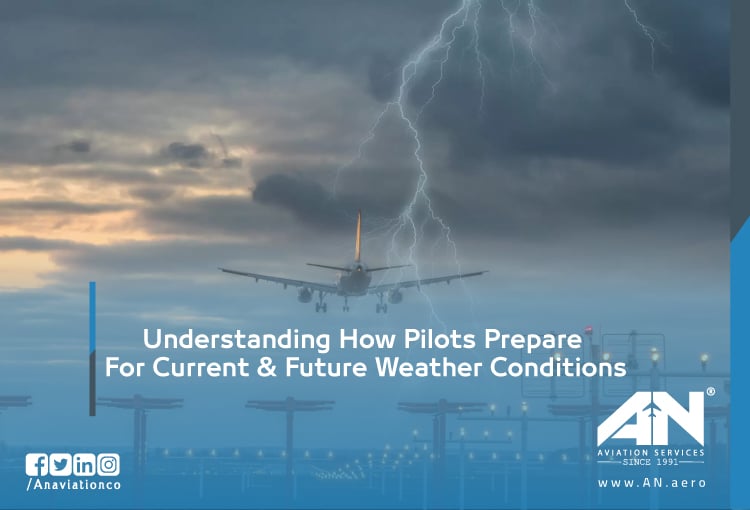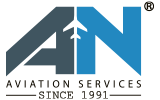
Staying informed about the weather is one of the most important parts of flying. It’s not just a normal thing for the pilots it’s a key part of keeping everyone safe and flights running on schedule. Without the right weather information, pilots might face unexpected turbulence, unsafe conditions, or delays. But how do pilots stay updated on aviation weather conditions? Let’s explore how they do it, why it matters, and what tools help them along the way.
Why Weather Data Is a Must for Flying?
Understanding aviation weather conditions isn’t just a practical skill it’s a key part of becoming a licensed pilot, and weather plays a huge role in every flight, from determining the safest route to deciding if it’s even okay to take off. Storms, high winds, fog, or icing can all cause serious problems. Knowing about these conditions ahead of time allows:
- Airline pilots to adjust routes.
- Private pilots pick better days to fly.
- And flight instructors to decide whether it’s safe to train students.
Accurate weather data isn’t just about avoiding bad conditions it also helps pilots save time, fuel, and money. No matter the type of pilot whether it’s commercial pilots ensuring passengers and cargo arrive on time or student pilots learning to make safe decisions accurate weather data is essential for every flight.
Where Pilots Get Weather Info?
Aviation weather conditions require constant monitoring, and the systems providing this information rely heavily on accurate data transiting or stored across networks. Automated Weather Observing Systems (AWOS) and satellite-based updates ensure that pilots receive reliable, up-to-the-minute weather data, whether they’re on the ground or mid-flight.
Much of this information, falls under controlled unclassified information (CUI). This type of data requires proper safeguarding to prevent unauthorized access while ensuring pilots and airlines have the information they need for safe and efficient flights. Here’s a brief demonstration of the main ones:
Meteorological Services:
Government agencies play a crucial role in aviation by providing accurate and timely weather data for pilots. Organizations like the National Weather Service (NWS) and the International Civil Aviation Organization (ICAO) operate for a lawful government purpose ensuring safety and efficiency in the skies. These agencies collect, analyze, and share critical aviation weather conditions to support safe and legal flight operations worldwide.
This information is often accessed through government-furnished computers connected to secure networks, ensuring that sensitive data like forecasts, warnings, and real-time updates remain protected while being easily available to pilots and dispatchers.
Automated Weather Observing Systems (AWOS):
If you’ve ever wondered how airports know what the weather is like, it’s thanks to systems like AWOS. These systems gather real-time weather data directly from the airport, measuring things like wind, visibility, and temperature. AWOS sends updates constantly, giving pilots up-to-the-minute conditions.
This system is especially helpful for private pilots flying into smaller airports without large control towers. It provides the information they need to land safely.
Pilot Reports (PIREPs):
Who better to report on the weather than a pilot already flying in it? That’s what PIREPs are for. Pilots share what they’re experiencing like turbulence, icing, or changes in visibility, and this information gets passed along to others.
PIREPs are like a weather heads-up straight from the sky. They’re fast, accurate, and incredibly helpful for other pilots planning flights.
Pre-Flight Weather Briefings
Before any flight, pilots spend time planning for the conditions they’ll face. This preparation involves several tools and systems:
Flight Service Stations (FSS):
These stations give detailed pre-flight briefings. A typical briefing might cover:
- Expected weather along the route.
- Possible hazards like thunderstorms.
- Updates on airport conditions.
Online Weather Services:
Many pilots use websites or apps for fast and convenient updates. These tools are especially popular in flight schools and private pilots since they make flight planning easier.
Airline Dispatch Centers:
For commercial pilots, dispatch centers are key. They monitor the weather nonstop and provide updates directly to the cockpit. These teams ensure pilots have the latest info before and during flights.
Getting Weather Updates Mid-Flight
Weather isn’t static it can change quickly, even during a flight. That’s why pilots need tools to stay informed while they’re in the air.
- Air Traffic Control (ATC): ATC keeps pilots updated on any sudden weather changes. They provide alerts about turbulence, storms, or other hazards ahead, acting as a critical safety partner.
- Onboard Weather Radar: Most planes are equipped with radar systems that let pilots see real-time weather. This is especially important for avoiding storms or areas of turbulence.
- Satellite Weather Data: Satellite-based systems provide updates even in remote regions without ground stations. These updates are Important for long-haul flights navigating oceans or sparsely populated areas.
The Role of Forecasting Tools in Aviation
Good weather forecast tools don’t just tell pilots what’s happening right now they help them plan for what’s coming. Several tools and models make forecasting more accurate:
- Numerical Weather Prediction (NWP) Models: These computer-generated models analyze weather data to predict what conditions will look like hours or days ahead. Pilots and dispatchers use these predictions to plan routes and schedules.
- Terminal Aerodrome Forecasts (TAFs): TAFs provide detailed, airport-specific weather forecasts. Covering 24 to 30 hours, they include wind conditions, visibility, and potential hazards like storms. Pilots use TAFs to prepare for takeoffs and landings.
- Significant Weather Charts: These charts highlight larger-scale weather patterns, like jet streams or major storm systems. They’re especially useful for long-haul flights or flights over multiple regions.
Tips for Pilots
Staying on top of aviation weather conditions doesn’t have to be overwhelming. Here are some practical tips for pilots:
- Use multiple sources: Don’t rely on just one system or report. Combining data from AWOS, PIREPs, and forecasts gives a more complete picture.
- Stay flexible: Weather can change fast. Always be ready to adjust your route or schedule if needed.
- Learn from others: Talk to experienced pilots and study PIREPs to get extra insights about weather challenges.
Flying safely means staying informed, and that starts with understanding aviation weather conditions. From pre-flight briefings to real-time updates mid-flight, pilots have access to a range of tools and resources to help them make the best decisions. Whether you’re a private pilot, a student in flight training, or an airline captain, knowing the weather isn’t just smart—it’s essential for every flight.
If You’re looking for expert support with flight planning, permits, and aviation services then contact AN Aviation team which is here to help with all your flight support needs. With over 30 years of experience, they ensure smooth operations every step of the way.

